[D02] Fireside Chat: Making CACTUS
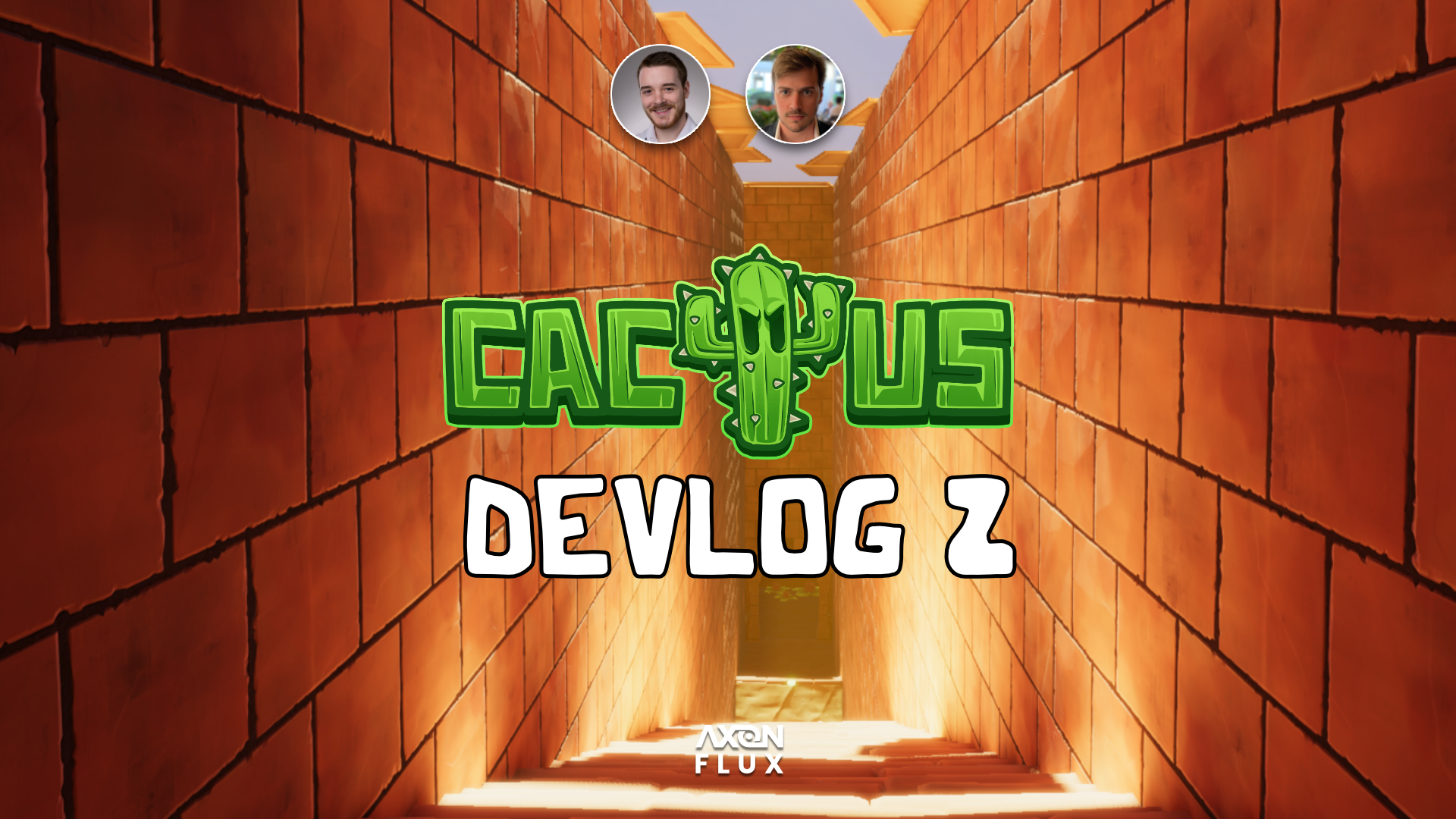
Designing CACTUS
For this weeks devlog I sat down with one of our developers, Oliver, to ask him about the process used to designing CACTUS.
He revealed some interesting details on how they came up with succulent protagonist, the unique needle tag & detonate feature and what’s most important when designing a level. So this one may be interesting for other developers as well.
Read the full conversation below to find out all the the nitty gritty.
Full Conversation
S: Oliver, to briefly remind our readers what we are talking about, why don’t you quickly describe CACTUS in a nutshell.
O: CACTUS is a first-person horde shooter that tests player skills with impressive numbers of varied enemies, fun puzzles and simple platforming segments - all of this in the role of a cactus on a quest to save his home planet from extinction.
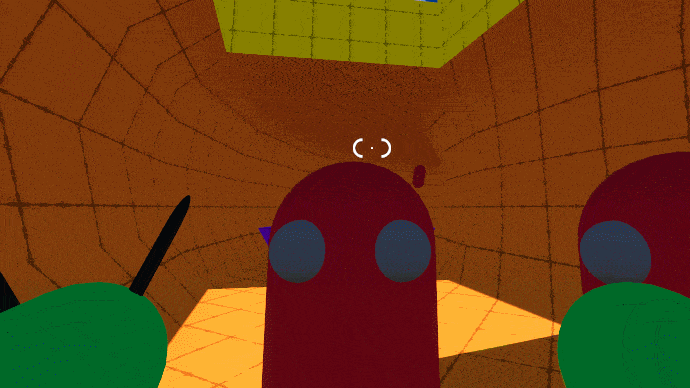
S: Alright, and as the cactus you shoot needles to tag enemies and make them explode by completing a reload mini game. How did you come up with the idea?
O: Figuring out a core mechanic is quite a bit of work. We developed twenty or so potential concepts for different types of first-person games. Based on these, we've built a couple of prototypes, each with wildly different mechanics. I can give you some examples:
- We had a shotgun/shield shooter, where deflecting attacks charges the damage of your next move. We had to reject the idea, because we couldn’t make the blocking work. To attack was always the better strategy and more fun.
- Another concept was a rolling robot. The player could move through the level as a rolling ball and could only attack while being stationary. In this approach it quickly turned out that the level design to accommodate this mechanic was too complex and therefore would take too long. So, we rejected it as well.
- Lastly there was a sawblade-yoyo idea, where players would use a rope weapon for combat as well as for agile moves. The rope physics were hard to implement satisfyingly, so after initial excitement about this idea, ultimately, we had to reject it too.
The CACTUS prototype was the most fun to play with from an early stage. It just felt right, so we went with it.
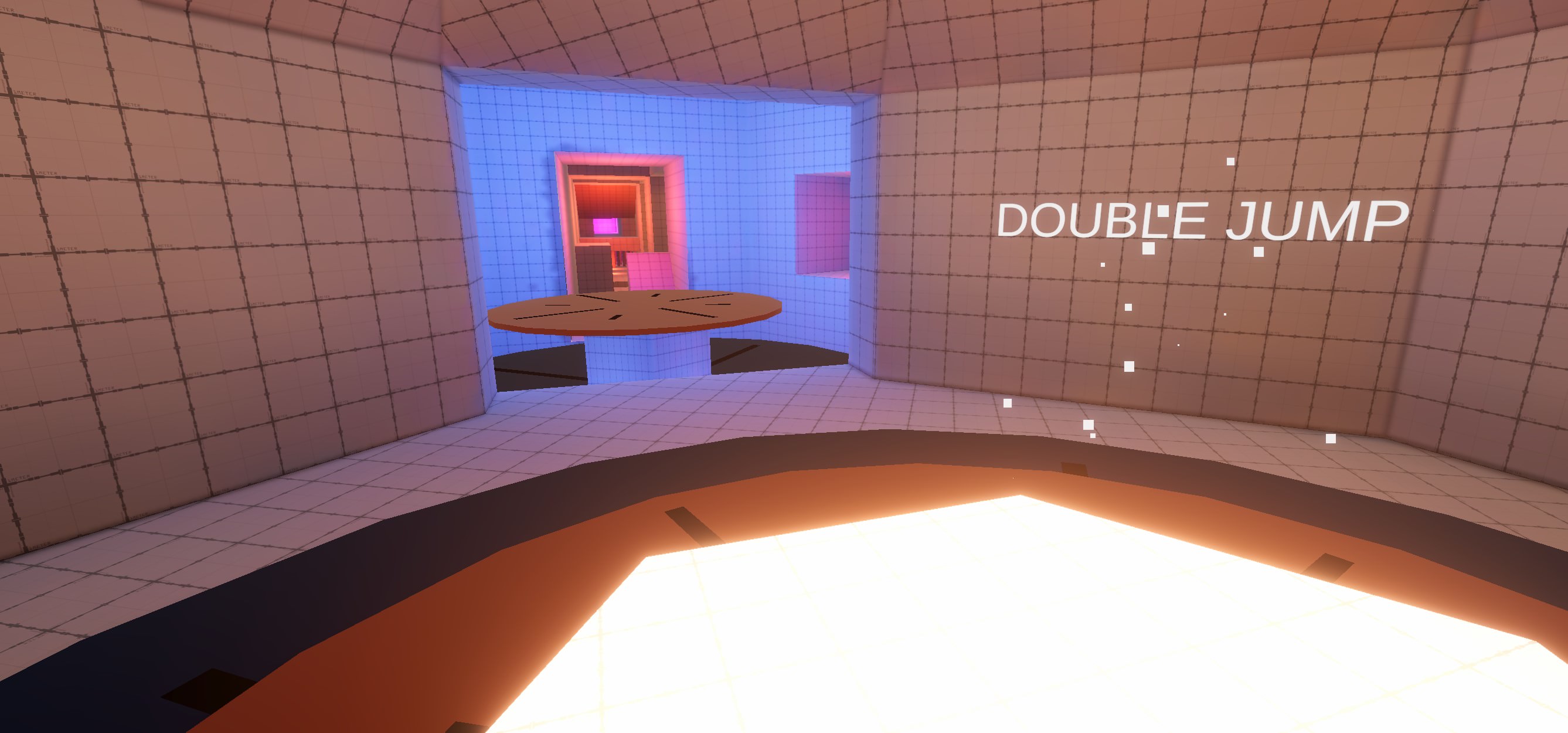
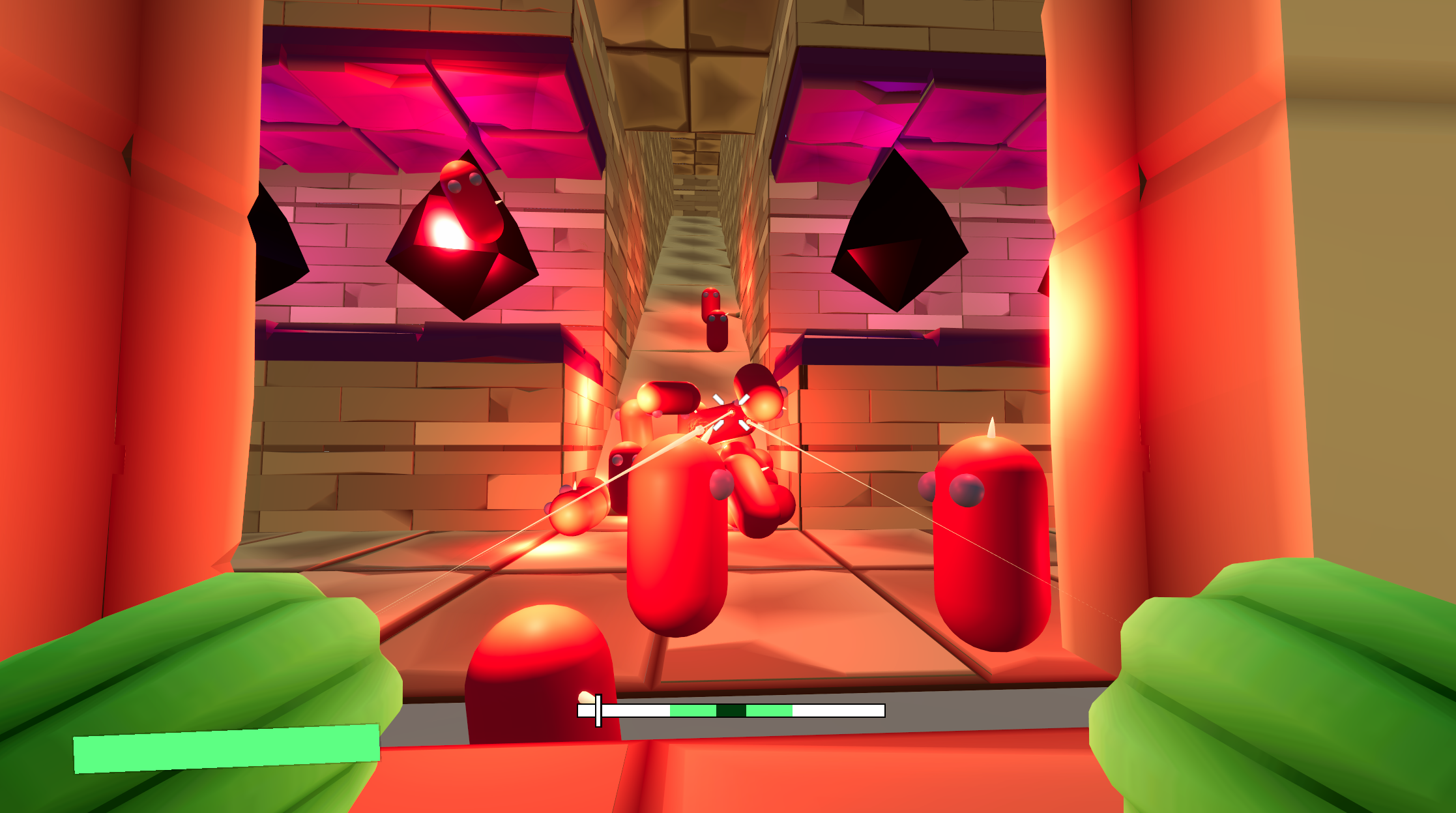
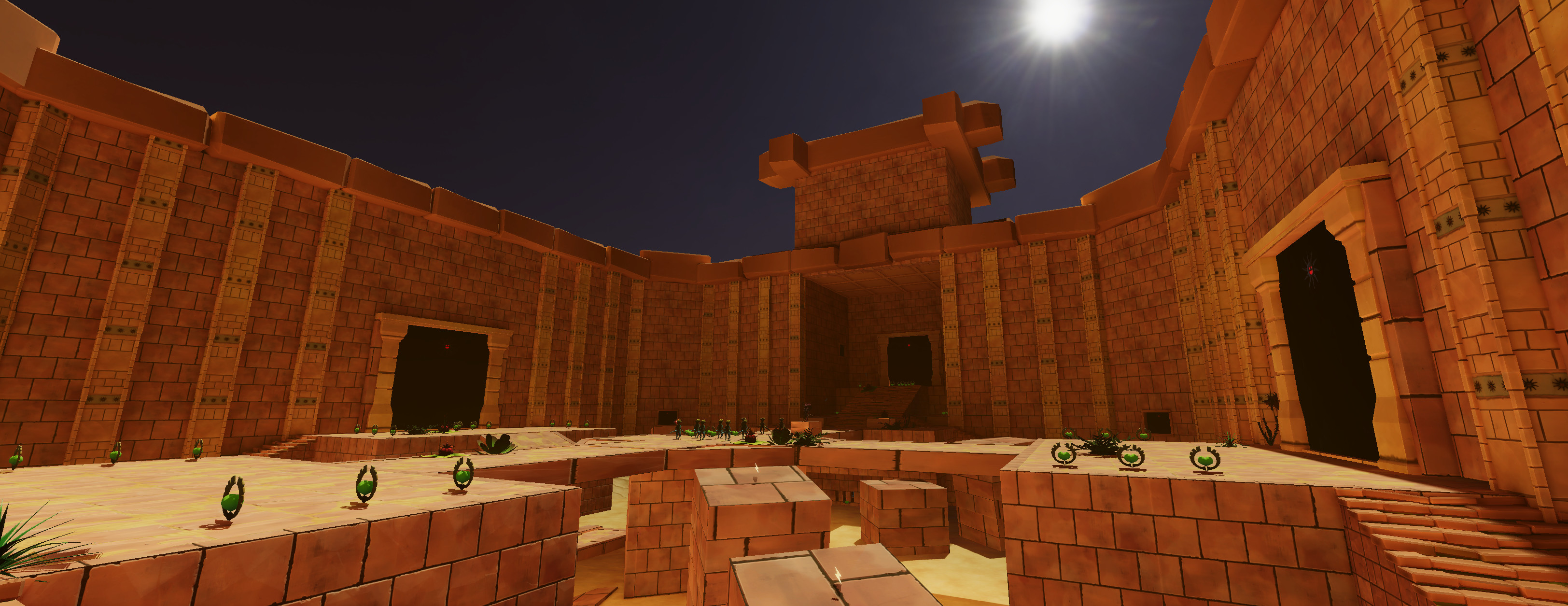
S: So once you figured out the core mechanic, you started fleshing out out the setting? What inspiration do you draw from?
O: Absolutely, with the needle-concept it only made sense to use a cactus as a protagonist, and for a cactus it was only right to put it in a desert setting. Sadly, we lack the time and funds to visit any real world desert locations, so we use photos as references.
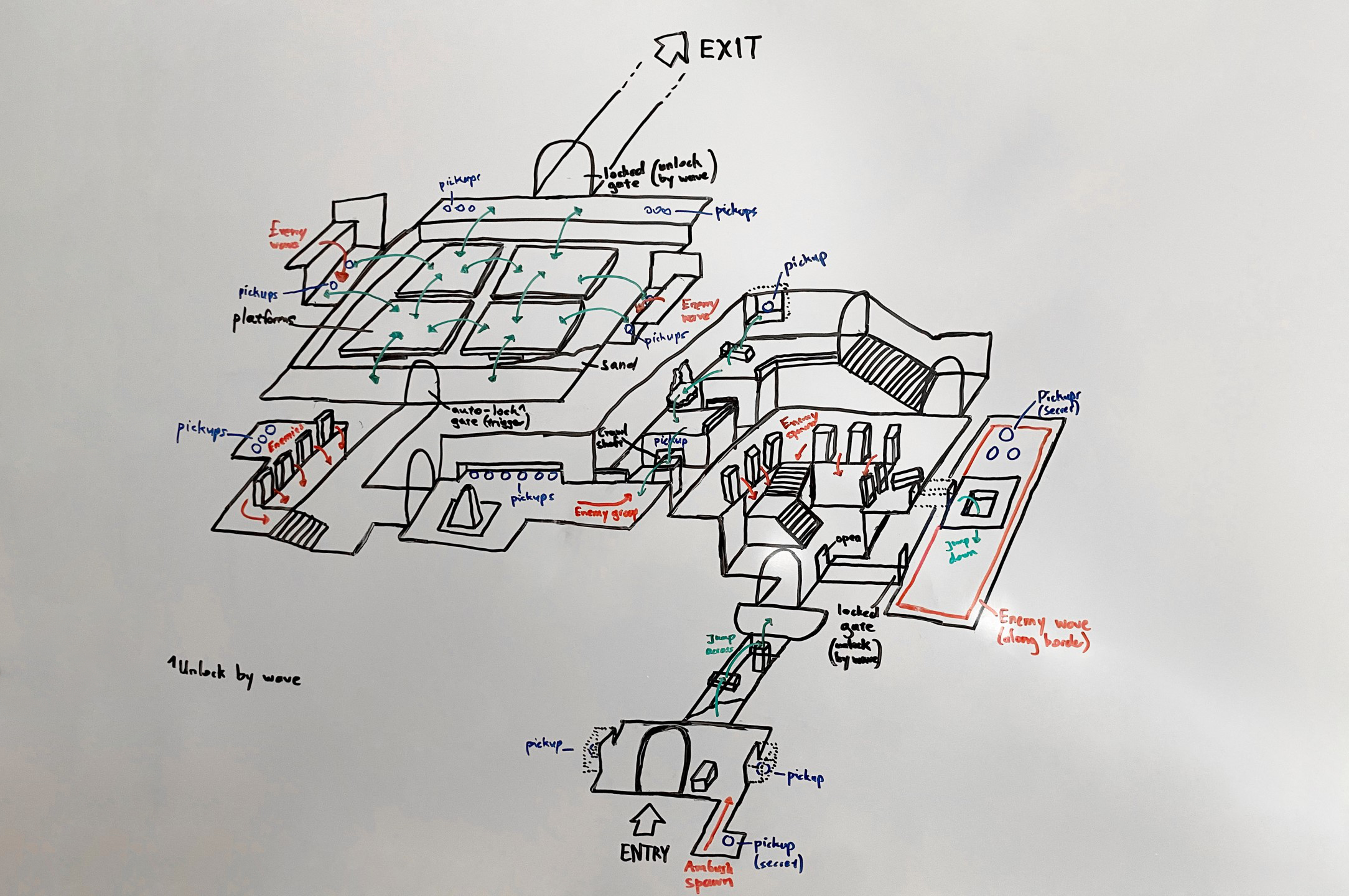
S: More important than the setting is the design of a level. What do you focus on when going about that?
O: Of course, enemy encounters are always the most important aspect of our levels. We see to it that the difficulty and intensity is steadily increasing while maintaining a balanced pacing. We also play with strategy. Some rooms are laid out so that you can carefully plan your attack and surprise enemies, others on the contrary, leave you vulnerable to enemy ambushes.
Besides enemy-management, we make sure that each room has a certain flow to it. Player guidance is important. We use certain signifiers to lead players through the level without interruptions due to orientation problems. Backtracking is a big no-no, so we build in measures to prevent that. There is also a regular switch forth and back between bright and wide outdoor spaces and dark, claustrophobic indoor rooms.
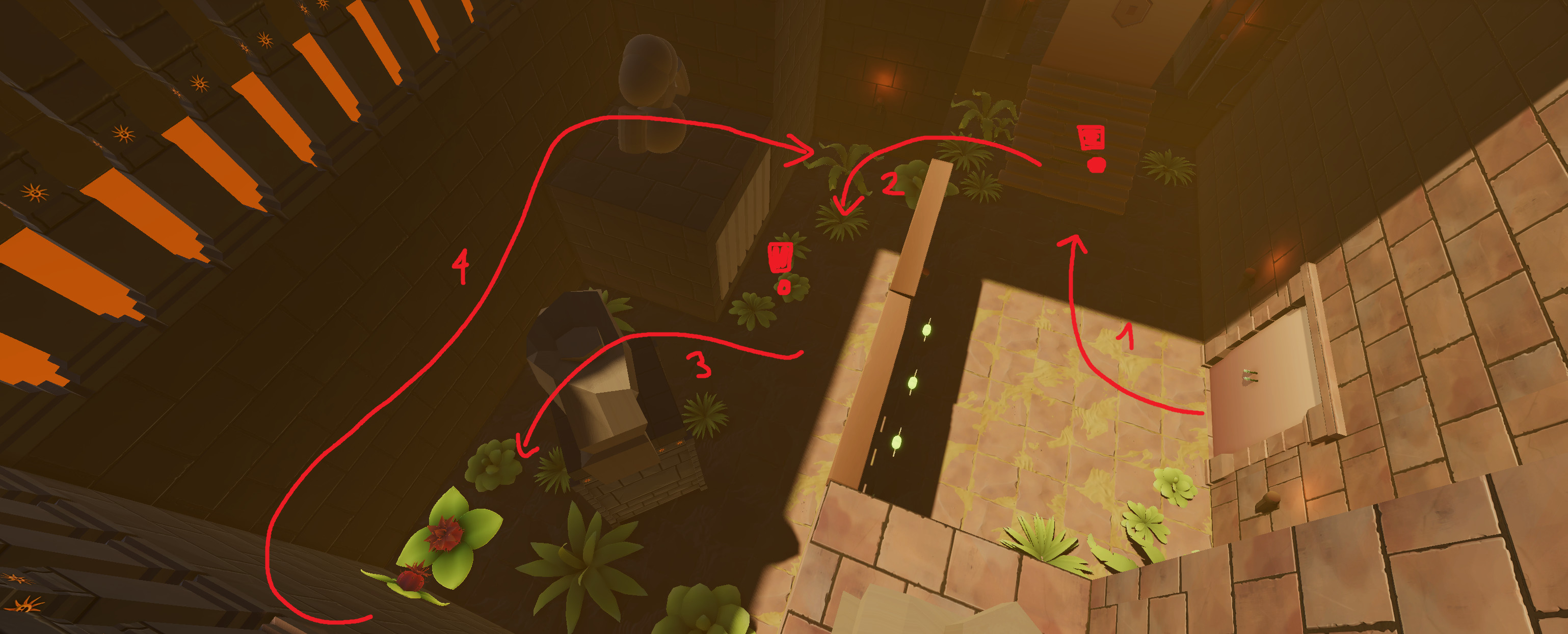
Lastly, when players solve a challenge, regular rewards matter. Not only because they're motivating, but also because it helps us balance the game (for example when awarding health items).
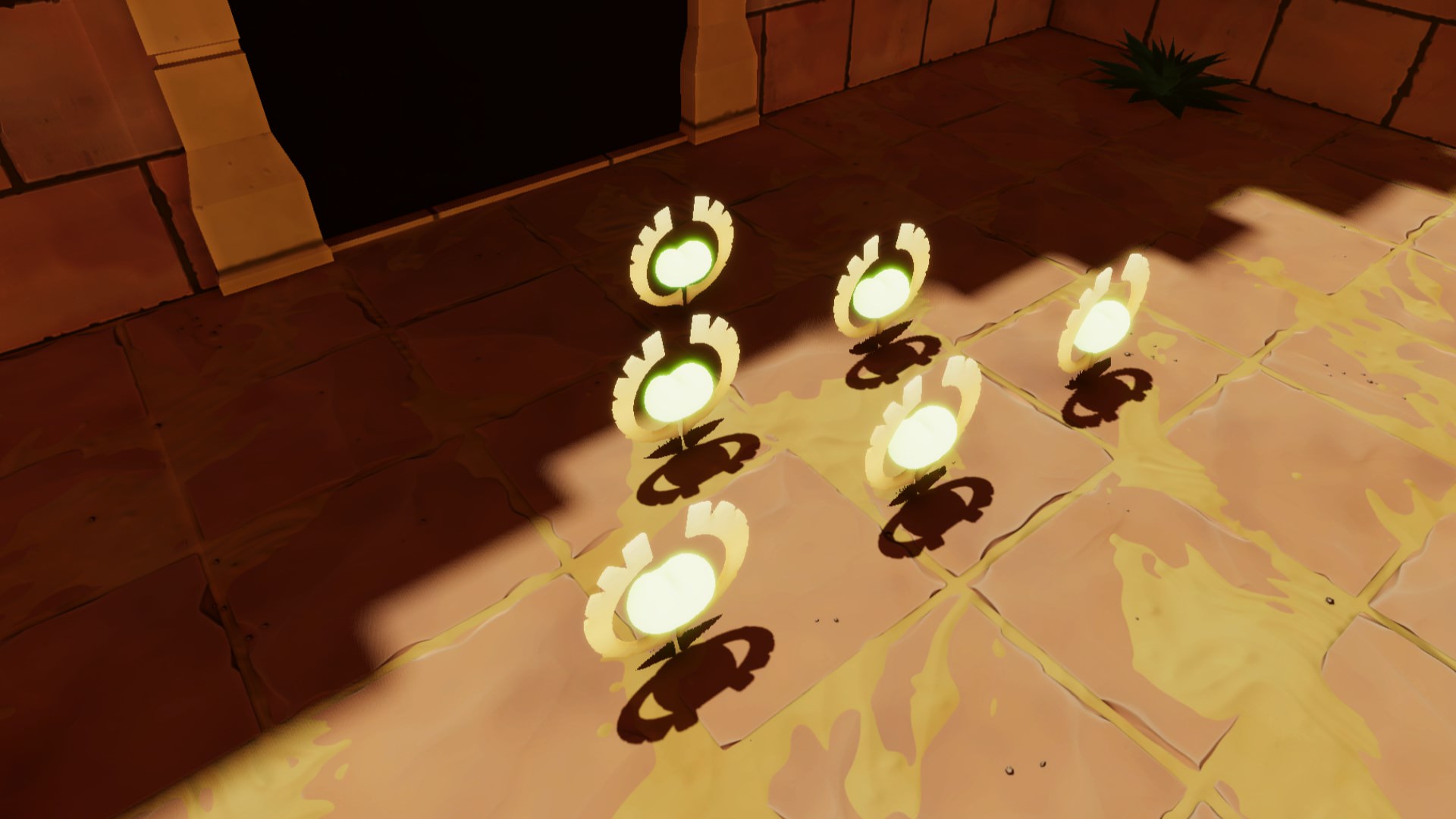
S: Now, the first level is approaching its completion. What was the biggest challenge in designing CACTUS you had to overcome so far?
O: In game development, there's never a lack of new problems. Right now, we are heavily tweaking our approach to light baking and it’s pretty tough, since issues stem from or affect other aspects of the game. Another big hurdle to overcome was the enemy navigation. The number we intend to spawn is high and when it comes to breaking the A.I. players always are quite imaginative. So, we put in a lot of effort and time in a solid pathfinding.
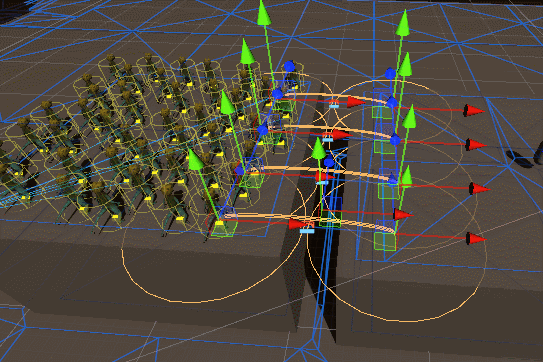
S: After overcoming the challenges of light baking, what are the next steps?
O: To be ready for the demo that we plan to release early 2023 we still need to rework some aspects of the viewport model. Then there are also the three enemy types we have in the game so far – each needs some finishing touches. And as always there are still a lot of bugs that await their inevitable squashing.
S: Sounds like something, so thanks for your time. That's all for today.
See you in a bit!
Free Demo
We will release a free demo in Q1 2023, so stay tuned.
Get In Touch
Find more about us on:
For business: Website | E-Mail | LinkedIn
For players: Facebook | Twitter | Instagram | TikTok | YouTube
CACTUS
A fast-paced FPS about a cactus fighting to save its home planet.
| Status | In development |
| Author | Axon Flux |
| Genre | Shooter |
| Tags | 3D, Fast-Paced, First-Person, FPS, Funny, Low-poly, Retro, Singleplayer, Unity |
More posts
- [DXX] CACTUS goes SteamAug 04, 2023
- [D12] Full Force: News GaloreJun 30, 2023
- [D11] News: Feedback & Big PlansApr 28, 2023
- [D10] Update: Demo & DiscordApr 21, 2023
- [D09] Demo: Changes AnnouncementMar 30, 2023
- [D08] Preview: Demo FeaturesMar 17, 2023
- [D07] CACTUS: Road To ReleaseFeb 27, 2023
- [D06] Deep Dive: Graphics UpdateFeb 10, 2023
- [D05] Sneak Peek: Graphics UpdateJan 26, 2023
- [D04] Tech Talk: Wave EditorJan 11, 2023
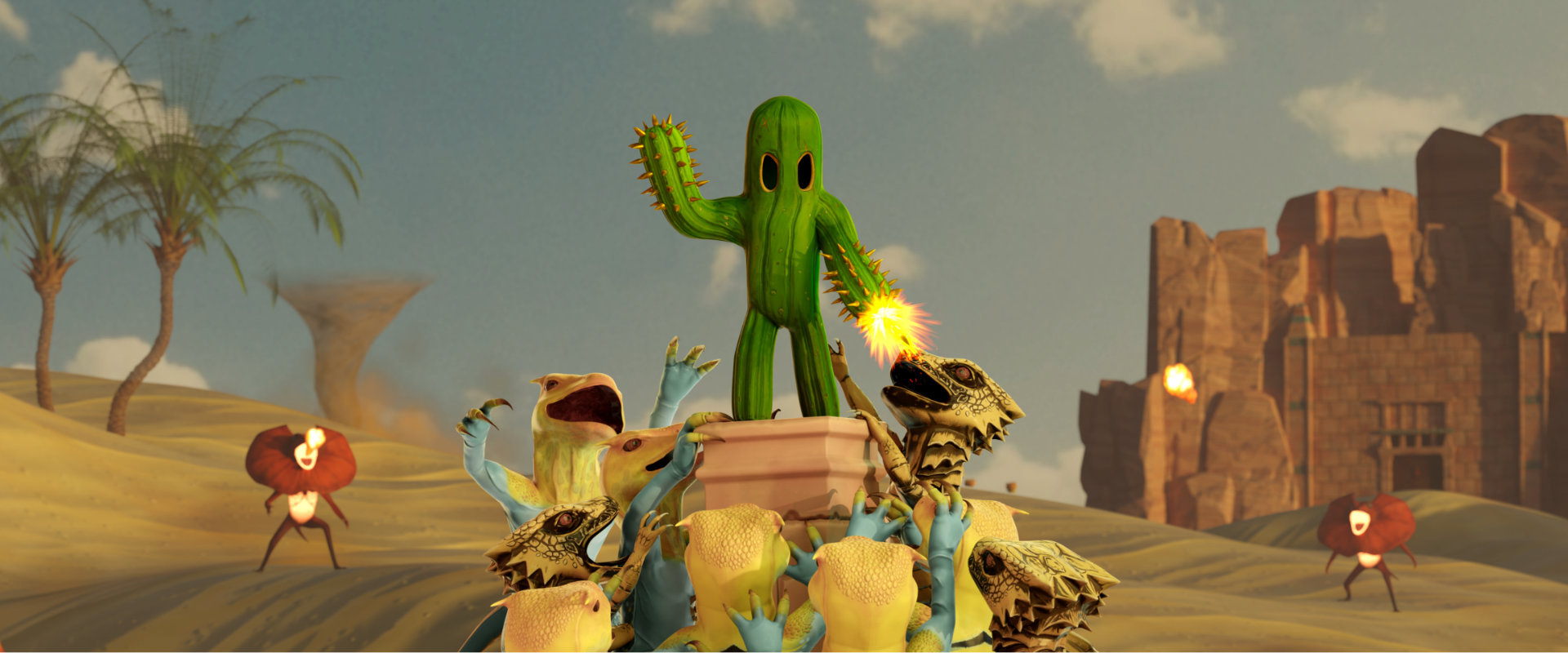
Leave a comment
Log in with itch.io to leave a comment.